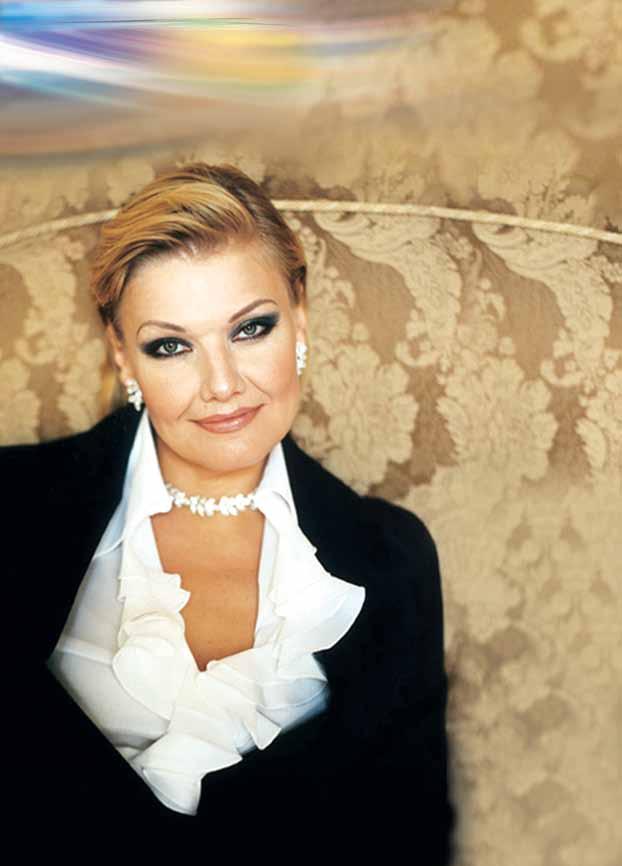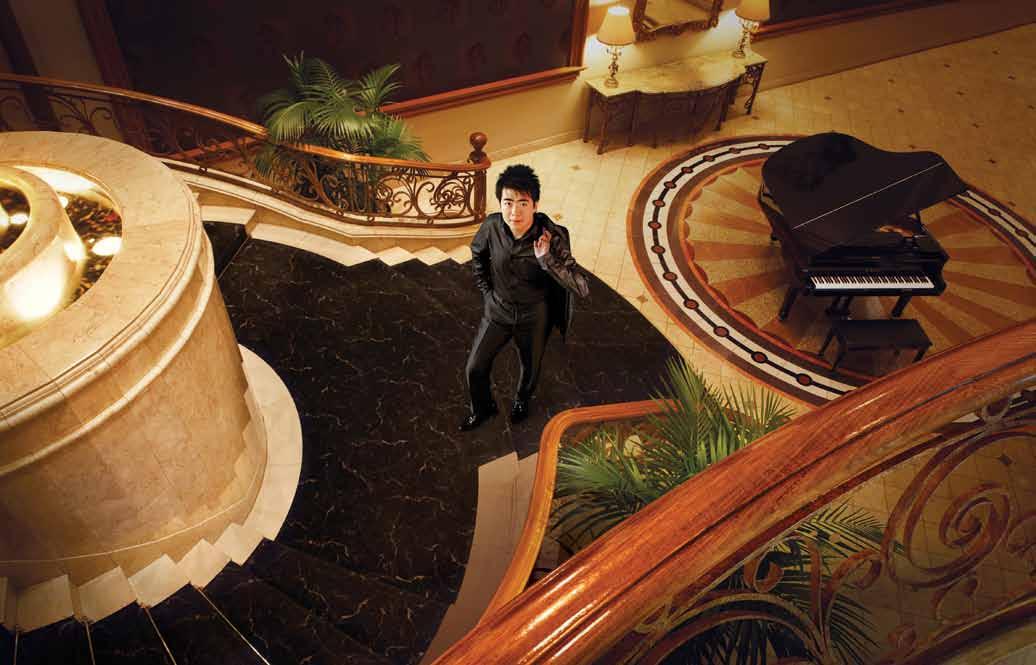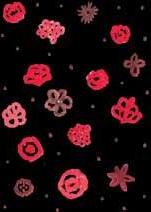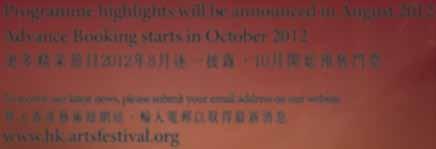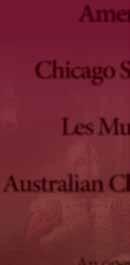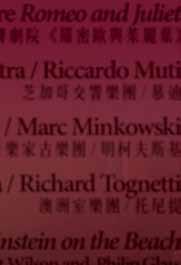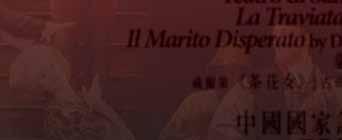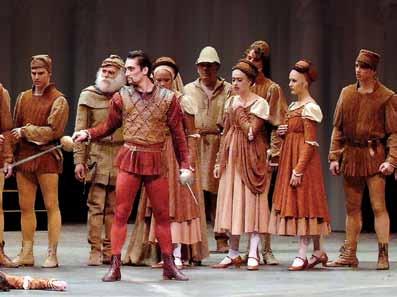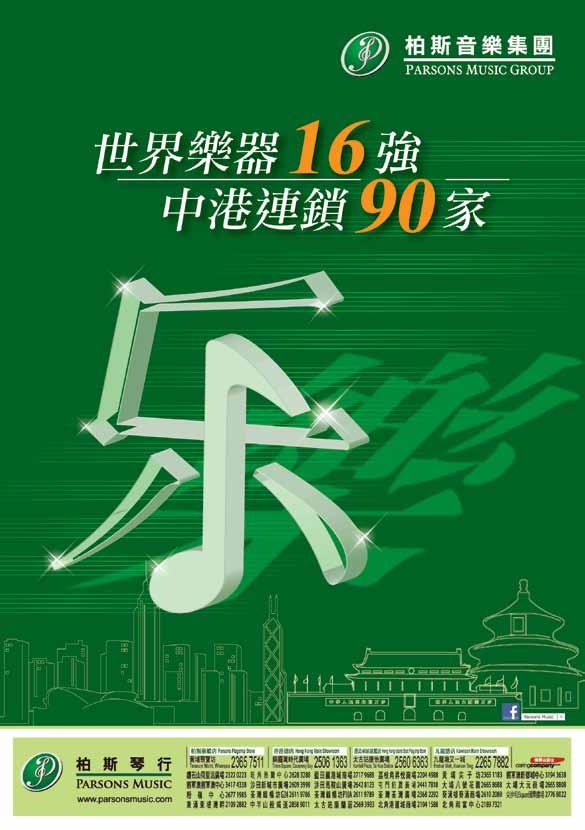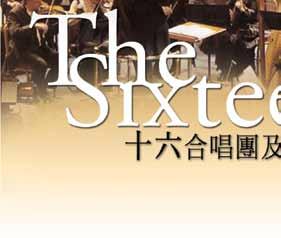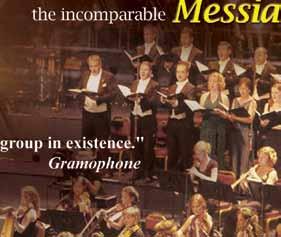Johannes Brahms
《我的愛情是綠色的》,作品63第5首
《搖籃曲》,作品49第4首
《永恆的愛》,作品43第1首
《徒然小夜曲》,作品84第4首
布拉姆斯所揀選的歌詞往往透露了他 憂鬱的個性 他選了很多以孤單、
孤立、悲痛或鄉愁為主題的詩歌。這 曾令尼采毫不留情地說他的音樂是 「無能者的憂愁」,這種說法實在未 算公道,然而胡爾夫亦非常贊同尼采 的意見,不過荀伯格卻認為布拉姆斯 是個偉大的革新主義者。
儘管如此,《我的愛情是綠色的》卻 是一首愉快的作品。布拉姆斯選用 了舒曼夫婦幼子菲利克斯的詩作為歌
詞。菲利克斯是布拉姆斯的教子, 1854 年出生時,舒曼已入住精神病 院。1873 年9 月17 日,舒曼太太克拉
拉寫了一封十分感人的信給布拉姆 斯,說到菲利克斯早前患上肺病,險 些掉了性命,幸好現在正康復中。克
拉拉還隨信附上菲利克斯所寫的詩 篇: 隨信附上他的詩篇,[……]希望你 可以讀一下,看看有沒有什麼是你喜 歡的。有些寫得很美,他很聰明,也 很幽默。[……]請老實告訴我你的 想法,不要以為我這個不中用的母親 把自己的孩子當作天才;相反,我怕 自己高估了孩子們的天份,恐怕有時 要求過高。
Meine Liebe ist grün Op 63 No 5
Wiegenlied Op 49 No 4
Von ewiger Liebe Op 43 No 1
Vergebliches Ständchen Op 84 No 4
Brahms’s choice of texts often betrays his own essentially melancholy nature: an extraordinary number of poems have loneliness as their subject or deal with isolation, lamentation and nostalgia. These themes prompted Nietzsche, in an unkind and unfair phrase, to describe Brahms’s music as Die Melancholie des Unvermögens (the melancholy of inability), a view passionately shared by Hugo Wolf but not by Schoenberg, who hailed Brahms as a great progressive.
Meine Liebe ist grün, however, is euphoric. Brahms sets a poem by his godson Felix, the youngest son of Robert and Clara Schumann, who had been born in l854 when Schumann was already confined to a mental home. On 17 September 1873 Clara wrote Brahms a touching letter in which she described how Felix was recuperating from an attack of the lung disease that would soon kill him. She also enclosed poems that Felix had written:
“I enclose his poems [...], and would be grateful if you could cast an eye over them and mark any that you happen to like. Some of them are really very pretty, his thoughts are often clever and humorous. [...] Tell
克拉拉的信顯然感動了布拉姆斯,作
曲家立刻動筆譜寫《我的愛情是綠色
的》,手稿在聖誕節時已來到柏林的 舒曼家。歌曲寫得歡快雀躍、琅琅上
口,尾奏亦十分動聽。
布拉姆斯的《搖籃曲》也許是他最著 名的作品,其創作背景十分有趣。
第一段(原本只有一段)的歌詞非常 古老,選自詩集《少年魔號》;第 二段是布拉姆斯的出版商辛洛克請
喬格.雪勒加上去的 由於歌曲 很受歡迎,出版商認為應該將作品 加長一點。雪勒的歌詞最後兩句原
本是「在樂園裏靜靜的、甜甜的睡 吧」(Droben im Paradies/Schlaf nun selig und suss),可是這與布拉姆斯
的旋律並不配合,於是作曲家把它改 成「靜靜地安睡吧,願你夢見天堂」
(Schlaf ’ nun selig uns süss, Schau im Traum’s Paradies.)。
另一方面,布拉姆斯的旋律亦非完全
是他的原創,作品參考了亞歷山大.
鮑曼的一首歌曲(作品 3 第 1 首),此 曲在奧地利十分流行。1859年,17歲 的貝莎.波瑙斯基隨女子合唱團造訪
漢堡,布拉姆斯聽到她唱出此曲,對 她留下深刻的印象,後來更在她誕下 第二個孩子時把《搖籃曲》送給當時
已成為輝柏太太的貝莎和她丈夫,給 他們「享用」。鮑曼的作品開頭時有 一種輕快的感覺,而布拉姆斯指示歌
曲要「溫柔地、流暢地」,開始時旋 律一片溫柔,正是兩部作品的相同之 處。
me honestly what you think of them — and don’t for a moment think that I, as a weak mother, consider him to be a genius. On the contrary, I’m so frightened of overestimating the talents of my children, that I sometimes perhaps ask too much of them.”
Brahms was clearly touched by Clara’s request and immediately set about composing Meine Liebe ist grün , a manuscript copy of which reached the Schumanns’ home in Berlin in time for Christmas. Brahms sets the little text strophically, with a memorable melody and a wonderful postlude.
Brahms’s Wiegenlied — possibly his most celebrated song — has an interesting compositional history. The first verse (originally the only one) is as old as the hills and was included in Des Knaben Wunderhorn ; the second was added by Georg Scherer on the instigation of Fritz Simrock, Brahms’s publisher, who felt that because of its enormous popularity the song deserved to be longer. Scherer’s original version of this strophe ended: “Droben im Paradies/Schlaf nun selig und suss ”(Sleep sweetly and blissfully in the paradise), but since these words did not fit Brahms’s melody, the composer altered the final couplet to: “ Schlaf nun selig und süss ’, Schau im Traum’s Paradies ” (Sleep sweetly now and blissfully, Behold Paradise in your dreams). Brahms’s tune is not entirely original either, being based on an Austrian popular song by Alexander
《永恆的愛》是 1864 年的作品,當
時布拉姆斯剛滿30 歲。旋律來自作曲 家為阿嘉德.馮.西波多所寫的合唱 歌曲《新娘歌》,講述自己抑壓的感 情。樂曲開始時以B小調的低音旋律建 立黯然的氣氛,歌手隨即加入,唱出 主題,主題發展,而鋼琴則像回音一 樣和應着。在一陣狂風暴雨,代表假 象的分離的段落過後,音樂由小調轉 到大調,女孩堅定地表示愛將永恆。
音樂由極輕聲走到較激烈的中強,到 了屬音。間奏過後尾段開始:此段以 新動機開始,接着以 6 / 8 拍和 3 / 4 拍交 替進行,歌手則歡欣地重複「永恆」 (ewig )這個詞語,可說是所有藝術 歌曲中最出色的華彩段之一。
這首精彩的歌曲,歌詞選自霍夫曼. 馮.法勒斯雷本1837年的《詩集》。
歌曲的名稱《永恆的愛》是布拉姆斯 自己取的,作曲家無法擺脫其與克拉 拉的感情困局——這一點得到布拉姆 斯的朋友樂評人馬克斯.卡爾貝克的 證實:布拉姆斯把克拉拉聽了這首歌 後的反應告訴了摯友赫曼.戴特斯, 而卡爾貝克把這件事記錄了下來: 「布拉姆斯說,克拉拉聽過他的演奏 後,靜靜的坐着,他看到她淚流滿 面」。
布拉姆斯在克雷奇默和祖考瑪格利奧 編輯的《德國民謠》裏找到《徒然小 夜曲》這首詩,為其配上音樂;這部 作品是作曲家最細膩最精巧的歌曲之 一。在寫給樂評人愛德華.漢斯里克 的信裏,布拉姆斯稱《徒然小夜曲》
Baumann (his Op 3 No 1) that the 17-yearold Bertha Porubsky sang to Brahms when, as a member of a ladies’ choir, she visited Hamburg in 1859. Brahms was clearly attracted to her, and when she gave birth to her second child he dedicated the song “for the happy use” of Mr and Mrs Faber (née Bertha Porubsky). The tender opening melody, marked teneramente , con moto , was based on the opening lilt of Baumann’s song.
Von ewiger Liebe dates from 1864, when Brahms had just turned 30. The tune was taken from Brahms’s own choral Brautgesang that he had written for Agathe von Siebold, and it speaks volumes about his own repressed sensuality. The dark B minor bass melody sets the mood and is taken up by the voice. The theme is developed, and the phrases of the vocal line are echoed by the piano. After the frenzied expression of an imagined departure, minor shifts to major as the girl professes eternal love. The music passes from pp to an intense mf on the dominant, and after an interlude the final stanza begins. Its opening phrase is new and develops into one of the most magnificent cadenzas in song literature, as 6/8 time is pitted against 3/4 and the word ewig (eternal) is exultantly repeated. This wonderful song sets a poem by Hoffmann von Fallersleben which was taken from Gedichte (1837). The title is Brahms’s own invention, and its relevance to Brahms’s emotional impasse vis-à-vis Clara Schumann cannot have
是他最診視的作品。作曲家給歌手和
伴奏的指示是「生動和幽默地」。傑
拉德.摩爾在他的《歌唱家與伴奏
家》(1953)裏把樂曲結束前三小節
的突強視為少女在愛人面前把窗子砰 的一聲關上,實在適合不過。
樂曲介紹:理查.斯托克斯
理查.斯托克斯是英國皇家音樂學院訪問教授,研 究藝術歌曲,曾出版德語、法語和西班牙語歌曲的 書籍,包括《藝術歌曲集》(Faber 2005)。
escaped the 31-year-old composer — a supposition strengthened by his friend the critic Max Kalbeck, who records that Brahms had confided to Hermann Deiters, a long-standing friend, how Clara had reacted to hearing the song: “Then Brahms described, when he had played the song to Frau Schumann, how she had sat there in silence, and how, when he looked at her, he had seen that her face was bathed in tears”.
Brahms found the poem Vergebliches Ständchen in the Deutsche Volkslieder collection, edited by Kretschmer and Zuccalmaglio, and it is one of his finest and wittiest songs; in a letter to the critic Eduard Hanslick he professed to prize it above all others. Singer and accompanist are instructed to perform lebhaft und gut gelaunt (with animation and good humour). Gerald Moore, in his Singer and Accompanist (1953), is surely right to interpret the sforzando three bars from the end as the sound of the window being slammed by the young girl in her lover’s face.
Programme notes by Richard Stokes
Richard Stokes is visiting professor of lieder at the Royal Academy of Music; he has published books on German, French and Spanish song, including The Book of Lieder (Faber, 2005)
Meine Liebe ist grün
Meine Liebe ist grün wie der Fliederbusch Und mein Lieb ist schön wie die Sonne; Die glänzt wohl herab auf den Fliederbusch Und füllt ihn mit Duft und mit Wonne.
Meine Seele hat Schwingen der Nachtigall Und wiegt sich in blühendem Flieder, Und jauchzet und singet vom Duft berauscht Viel liebestrunkene Lieder.
Text: Felix Schumann Wiegenlied
Guten Abend, gut’ Nacht, Mit Rosen bedacht, Mit Näglein besteckt, Schlupf’ unter die Deck’. Morgen früh, wenn Gott will, Wirst du wieder geweckt.
Guten Abend, gut’ Nacht, Von Englein bewacht! Die zeigen im Traum Dir Christkindleins Baum: Schlaf’ nun selig uns süss, Schau im Traum’s Paradies.
Text: Georg Scherer
My love is green
My love is as green as the lilac bush And my sweetheart’s as fair as the sun; The sun shines down on the lilac bush And fills it with delight and fragrance.
My soul has a nightingale’s wings And sways in the blossoming lilac, And, drunk with fragrance, exults and sings
Many a love-drunk song.
Text: Felix Schumann
Lullaby
Good evening, good night, Canopied with roses, Bedecked with carnations, Slip beneath the coverlet. Tomorrow morning, if God wills, You shall be woken again.
Good evening, good night, Watched over by angels! In your dreams they’ll show you The Christmas Tree: Sleep sweetly now and blissfully, Behold Paradise in your dreams.
Text: Georg Scherer
《我的愛情是綠色的》
我的愛情綠得像紫丁香葉, 我的愛人美得像太陽。 太陽照在紫丁香葉上, 給葉子注滿喜樂、芳香。
我的靈魂長了夜鶯的翅膀, 在盛放的紫丁香中穿梭, 沉醉在芬芳裏,歡欣地, 唱着一首又一首情歌。
詞:菲利克斯.舒曼 《搖籃曲》
安睡,安睡, 丁香和玫瑰 佈滿你的小床 陪你入夢鄉。
願上帝保護你 一覺睡到天明。
安睡,安睡, 天使守護你。
願你於夢中 見到聖誕樹: 靜靜地安睡吧, 願你夢見天堂。
詞:喬格.雪勒
Von ewiger Liebe
Dunkel, wie dunkel in Wald und in Feld! Abend schon ist es, nun schweiget die Welt.
Nirgend noch Licht und nirgend noch Rauch, Ja, und die Lerche sie schweiget nun auch.
Kommt aus dem Dorfe der Bursche heraus, Gibt das Geleit der Geliebten nach Haus, Führt sie am Weidengebüsche vorbei, Redet so viel und so mancherlei:
‘Leidest du Schmach und betrübest du dich, Leidest du Schmach von andern um mich,
Werde die Liebe getrennt so geschwind, Schnell wie wir früher vereiniget sind.
Scheide mit Regen und scheide mit Wind, Schnell wie wir früher vereiniget sind.’
Spricht das Mägdelein, Mägdelein spricht:
‘Unsere Liebe sie trennet sich nicht!
Fest ist der Stahl und das Eisen gar sehr, Unsere Liebe ist fester noch mehr:
Eisen und Stahl, man schmiedet sie um, Unsere Liebe, wer wandelt sie um?
Eisen und Stahl, sie können zergehn, Unsere Liebe muss ewig bestehn!’
Text: Hoffmann von Fallersleben
Eternal love
Dark, how dark in forest and field! Evening already, and the world is silent.
Nowhere a light and nowhere smoke, And even the lark is silent now too.
Out of the village there comes a lad, Escorting his sweetheart home,
He leads her past the willow-copse, Talking so much and of so many things:
‘If you suffer sorrow and suffer shame, Shame for what others think of me,
Then let our love be severed as swiftly, As swiftly as once we two were plighted.
Let us depart in rain and depart in wind, As swiftly as once we two were plighted.’
The girl speaks, the girl says: ‘Our love cannot be severed!
Steel is strong, and so is iron, Our love is even stronger still:
Iron and steel can both be reforged, But our love, who shall change it?
Iron and steel can be melted down, Our love must endure for ever!’
Text: Hoffmann von Fallersleben
《永恆的愛》
黑暗,森林田野多麼黑暗! 傍晚降臨,萬籟俱寂。
四周無光,炊煙難覓, 連雲雀也沉默。
小伙子走出村莊, 送他的愛人回家。
領她走過柳樹林, 談天說地,共抒胸臆:
「假如人家看不起我, 讓你受苦蒙羞,
我們的愛得立刻中斷, 像我們訂終身時一般, 刻不容緩。
讓我們的情在風雨中消散, 像我們訂終身時一般, 刻不容緩。」
女孩開口了,她說: 「我們的愛怎能中斷,
鋼鐵雖強, 我們的愛更堅強:
鋼鐵可鍛, 我們的情比金堅
鋼鐵可熔, 我們的愛卻是永恆!」
詞:阿嘉德.馮.西波多
Vergebliches Ständchen
Er
Guten Abend, mein Schatz, Guten Abend, mein Kind! Ich komm aus Lieb zu dir, Ach, mach mir auf die Tür, Mach mir auf die Tür!
Sie
Mein Tür ist verschlossen, Ich lass dich nicht ein; Mutter, die rät mir klug, Wärst du herein mit Fug, Wärs mit mir vorbei!
Er
So kalt ist die Nacht, So eisig der Wind, Dass mir das Herz erfriert, Mein Lieb erlöschen wird; Öffne mir, mein Kind!
Sie
Löschet dein Lieb, Lass sie löschen nur! Löschet sie immerzu, Geh heim zu Bett, zur Ruh, Gute Nacht, mein Knab!
Text: Anonymous
Vain serenade
He Good evening, my sweetheart, Good evening, my child! I come because I love you, Ah! open up your door to me, Open up your door!
She My door’s locked, I won’t let you in; Mother gave me good advice, If you were allowed in, All would be over with me!
He The night’s so cold, The wind’s so icy, My heart is freezing, My love will go out; Open up, my child!
She If your love goes out, Then let it go out! If it keeps going out, Then go home to bed and go to sleep, Good night, my lad!
Text: Anonymous
《徒然小夜曲》
他
晚安,我的愛,
晚安,我的女孩!
我因着愛而來,
來,為我將門打開,
將門打開!
她 我的門已鎖,
我不會讓你進來。
媽媽告訴我:
你進來,
我就完了!
他
夜正寒,
風正涼
我的心就要凍僵,
我的愛就快熄滅,
開門吧,我的好姑娘!
她
愛要熄滅,
就讓它熄吧!
熄滅了,
便回家上床睡覺。
晚安,小子!
詞:佚名
德布西 Claude Debussy
《黃昏的和聲》
《噴泉》
《瞑想》
德布西首次接觸到波德萊爾作品的時 間,應該是作曲家獲羅馬大獎在羅馬 美第奇別墅深造的時候。在1886年10 月19 日一封寫於羅馬的信中,他說希
望寫一種音樂,它「靈活多變,足以 應付內心的情感起伏,又能表達幻想 的變化無常」 這幾乎是從波德萊 爾的信件中直接引錄的字句。在音樂 方面,已有前人如夏布里耶和弗瑞為 波德萊爾的詩作譜曲,但當德布西動 筆以《惡之花》譜寫《波德萊爾的五 首詩》時,他的方向與其他作曲家大 為不同。
造成這種不同的原因之一,是五首歌 曲中的三首(也就是今天晚上演出
的三首)寫於 1888 年7 月德布西去拜 羅伊特聆聽華格納的音樂后。這次與 華格納音樂的接觸,令作曲家改變他
寫鋼琴伴奏的風格,由本來相對地簡 單,變成在音型與和聲上都較為複 雜。如果我們考慮到德布西鍾情「孩 童的天真、坦率」這點看來好像有點 矛盾,但作曲家的目標是達到一種新 的現實主義,他曾寫道:「有些人只 想遵照規則,但我希望表達自己聽到 的聲音」;而說到波德萊爾,他「聽 到的」當然包括自己高度活躍、複雜 的幻想。
Harmonie du soir
Le jet d’eau
Recueillement
It seems that Debussy first came across Baudelaire’s writings while he was a Prix de Rome scholar at the Villa Médicis in the Italian capital. Writing from there, on 19 October 1886, he referred to his desire to compose a kind of music that was “supple enough, varied enough to adapt itself to the lyrical movements of the soul, to the caprices of reverie” — terms taken almost word for word from one of Baudelaire’s own letters. On the musical front, he had before him examples of Baudelaire settings by Chabrier and Fauré, but when he came to compose his Cinq poèmes de Baudelaire, to texts from Les fleurs du mal, his reactions were considerably different from theirs.
One reason for this was that three of the five songs (the three in this evening’s recital) date from after Debussy’s visit to Bayreuth in July 1888. This Wagner experience led him to complicate his hitherto fairly simple piano accompaniments, both in their figuration and harmonic style. That may seem paradoxical when we consider Debussy’s attraction to “the naive candour of childhood”. But his goal was a new kind of realism: “some people”, he wrote, “want primarily to stick to the rules; I want to express only what I
《噴泉》在某程度上於織體的清晰度
和空間感都與其他作品不同,這點
跟作曲家其他關於水的音樂類似。但
是,雖然作品的織體較簡單,卻沒有
單純跟從波德萊爾的結構:詩人的三 重疊句型是固定的,而德布西則把每 次的伴奏都寫得不同,又特意模糊了
副歌和詩節之間的界線。在作品裏, 作曲家比較着重描繪噴泉中水流下落 的樣子,對向上噴湧的片段着墨較
少。因此,歌曲給聽眾的感覺較為怠 倦,像女孩子漠不關心的樣子。
《黃昏的和聲》的結構取自隔行同韻
的馬來詩體,每一節的第二、四行跟 下一節的第一、三行相同。由於其脈 絡對每一行的效果影響很大,德布西
避免逐個音符重複,而在每次重複詩 行時用相似的旋律取代。雖然歌曲講 述的是黃昏,傳統上是歇息的時間,
歌詞前半部份卻用了很多富有動感 的字眼,如「輕顫」(vibrant )、「旋 轉」(tournent)、「眩暈」(vertige)
和「震動」( frémit )。進行到最後幾 小節時,正如美國學者阿瑟.溫克指 出,「以“ oir ”為韻的詩行指向精
神意義,以“ ige ”為韻的則指向官 能意義,兩種思想匯合起來,到了頂 點」,音樂才慢慢停止。作曲家用一
個非常有特色的五個下行音為動機, 當中還有一個輕巧的三連音,把整首 歌串連起來。
德布西於 1889 年間寫成《瞑想》這 首歌,作品中華格納的影子最為明
顯,可能是因為該曲是作曲家在夏
hear”. And what he “heard” included, as for Baudelaire, the sounds of his highly active and complex imagination.
To some extent Le jet d’eau stands apart from its companions in the clarity and spaciousness of its textures, which conform to those of the many other water pieces in Debussy’s output. But even if these textures are simpler, they do not merely replicate Baudelaire’s patterning: where the poet’s threefold refrain is constant, Debussy varies the accompaniment each time and blurs the distinctions between refrain and stanza. Throughout, he emphasizes not so much the upward flight of the water in the fountain as its fall, so that the ultimate message of the song is one of languor, mirroring the girl’s “pose nonchalante”.
德》之後創作的。很明顯,「苦痛」 (Douleur )這個字的伴奏音型就取 自這套歌劇。雖然旋律是音節構成 的,但歌手要唱的音域很闊,結尾一 句由低音升C 走到高音升G ,作曲家還 刁難似的指示「極輕聲、漸消失」。
和聲色彩亦豐富了很多,當中不單使 用了「崔斯坦式」和弦(與探討死亡 的主題相符),還有一點點全音和聲 (唱到「垂死」(Moribond)時), 及空間感很強、需「莊嚴地」演奏的 大調三和弦(唱到「長長的裹屍布」 (long linceul)時)。在寫過這些波 德萊爾的歌曲後,德布西在很大程度 上放棄了華格納的「氣勢」 那種 磅礡、不能壓制的氣魄。取而代之的 是「崔斯坦的鬼魂」,在《佩利亞斯 與梅麗桑德》和《遊戲》不經意地悄 悄走出來,提醒我們作曲家在華格納 影響下作出的勇敢嘗試。
樂曲介紹:羅傑.尼科爾斯 羅傑.尼科爾斯於2006年曾獲頒法國國家榮譽騎士 勳章,表彰他對文化藝術的貢獻。他有很多著作, 最新一部是2011年由耶魯大學出版社出版的關於拉 威爾生平的書籍。
季於拜羅伊特聽過《崔斯坦與伊索爾 and 'ige' for words of sensual significance”. Debussy binds the whole song together with a characteristic descending five-note motif, including a little curling central triplet. Wagner appears most obviously in Recueillement , composed at some point in 1889 and possibly after Debussy had heard Tristan und Isolde at Bayreuth that summer. Certainly the piano figure on the word “ Douleur ” comes straight from that opera. Although the word setting is again syllabic, the range of the vocal line is now much wider, concluding in a sweeping phrase from low C sharp to high G sharp, which Debussy cruelly marks pp morendo. The harmonic palette is also richer, including not only Tristanesque chords (in keeping with a song that dwells on images of death) but also touches of whole-tone harmony (on moribond) and spacious major triads (for the long linceul), marked solennel. After these Baudelaire songs, Debussy to a large extent abandoned the Wagnerian “Schwung” — that zestful, irresistible momentum. Instead, “the ghost of old Klingsor” would peep out unexpectedly, in Pelléas et Mélisande , in Jeux, to remind us of the bold imaginings of Debussy’s Wagnerian spring.
The structure of Harmonie du soir is that of a Malaysian pantoum, in which the second and fourth lines of one verse become the first and third lines of the next. Since the effect of a line depends to a large extent on its context, Debussy avoids note-for-note repetition, opting instead for a more general resemblance when the line recurs. Although the song celebrates evening, traditionally a time of repose, the first half is shot through with energizing words: “vibrant”, “tournent”, “ vertige ”, “ frémit ”, slowly coming to rest in the final bars where, as the American scholar Arthur Wenk has pointed out, we reach “the culmination of two converging trains of thought, represented by the two rhymes ‘oir’ for words of spiritual significance
Programme notes by Roger Nichols
Roger Nichols was made a Chevalier de la Légion d’honneur for services to French culture in 2006; he has written many books, the most recent being a biography of Ravel published earlier this year by Yale University Press.
Harmonie du soir
Voici venir les temps où vibrant sur sa tige
Chaque fleur s’évapore ainsi qu’un encensoir;
Les sons et les parfums tournent dans l’air du soir; Valse mélancolique et langoureux vertige!
Chaque fleur s’évapore ainsi qu’un encensoir;
Le violon frémit comme un coeur qu’on afflige; Valse mélancolique et langoureux vertige!
Le ciel est triste et beau comme un grand reposoir.
Le violon frémit comme un coeur qu’on afflige, Un coeur tendre, qui hait le néant vaste et noir!
Le ciel est triste et beau comme un grand reposoir.
Le soleil s’est noyé dans son sang qui se fige.
Un coeur tendre, qui hait le néant vaste et noir, Du passé lumineux recueille tout vestige!
Le soleil s’est noyé dans son sang qui se fige…
Ton souvenir en moi luit comme un ostensoir!
Evening harmony
Now comes the time when quivering on its stem
Each flower sheds perfume like a censer; Sounds and scents turn in the evening air; Melancholy waltz and reeling languor!
Each flower sheds perfume like a censer; The violin throbs like a wounded heart; Melancholy waltz and reeling languor!
The sky is sad and beautiful like a great altar.
The violin throbs like a wounded heart, A fond heart that loathes the vast black void!
The sky is sad and beautiful like a great altar.
The sun has drowned in its congealing blood.
A fond heart that loathes the vast black void,
And garners in all the luminous past!
The sun has drowned in its congealing blood…
Your memory within me shines like a monstrance!
《黃昏的和聲》
這一刻花莖輕顫,
花兒朵朵像香爐吐露芬芳,
樂音和香氣 在傍晚的空氣中旋轉,
憂鬱的圓舞曲、 令人眩暈的倦懶!
花兒朵朵像香爐吐露芬芳, 琴弦震動像受傷的心, 憂鬱的圓舞曲、 令人眩暉的倦懶! 淒美的天空 恍若宏大的祭壇。
琴弦震動像受傷的心,
溫柔的心
憎恨那無盡的黑暗虛空! 淒美的天空 恍若宏大的祭壇。
太陽淹沒
在自己凝結的血中,
溫柔的心
憎恨那無盡的黑暗虛空, 把光輝的過去都收藏起來!
太陽淹沒 在自己凝結的血中… 關於你的記憶 像聖物閃耀在我心中!
Le jet d’eau
Tes beaux yeux sont las, pauvre amante!
Reste longtemps, sans les rouvrir, Dans cette pose nonchalante
Où t’a surprise le plaisir. Dans la cour le jet d’eau qui jase Et ne se tait ni nuit ni jour, Entretient doucement l’extase Où ce soir m’a plongé l’amour.
La gerbe d’eau qui berce Ses mille fleurs, Que la lune traverse De ses pâleurs, Tombe comme une averse De larges pleurs.
Ainsi ton âme qu’incendie
L’éclair brûlant des voluptés
S’élance, rapide et hardie,
Vers les vastes cieux enchantés. Puis, elle s’épanche, mourante, En un flot de triste langueur, Qui par une invisible pente Descend jusqu’au fond de mon coeur.
La gerbe d’eau qui berce Ses mille fleurs, Que la lune traverse De ses pâleurs, Tombe comme une averse De larges pleurs.
Ô toi, que la nuit rend si belle, Qu’il m’est doux, penché vers tes seins, D’écouter la plainte éternelle Qui sanglote dans les bassins!
Lune, eau sonore, nuit bénie, Arbres qui frissonnez autour, Votre pure mélancolie
Est le miroir de mon amour.
La gerbe d’eau qui berce Ses mille fleurs, Que la lune traverse De ses pâleurs, Tombe comme une averse De larges pleurs.
The fountain
Your beautiful eyes are fatigued, poor lover!
Rest awhile, without opening them anew, In this careless pose
Where pleasure surprised you.
The babbling fountain in the courtyard Never silent night or day, Sweetly prolongs the ecstasy Where love this evening plunged me.
The sheaf of water
Swaying its thousand flowers, Through which the moon gleams With its pallid light, Falls like a shower Of great tears.
And so your soul, lit By the searing flash of ecstasy Leaps, swift and bold, To vast enchanted skies.
And then, dying, spills over, In a wave of sad listlessness, Down some invisible incline Into the depths of my heart.
The sheaf of water
Swaying its thousand flowers, Through which the moon gleams With its pallid light, Falls like a shower Of great tears.
O you, whom night renders so beautiful, How sweet, as I lean towards your breasts, To listen to the eternal lament Sobbing in the fountain’s basin!
O moon, lapping water, blessed night, Trees that quiver all around, Your sheer melancholy Is the mirror of my love.
The sheaf of water
Swaying its thousand flowers, Through which the moon gleams With its pallid light, Falls like a shower Of great tears.
《噴泉》
你美麗的雙眼困倦了, 可憐的愛人!
小憩一會,不要睜眼, 保持這隨意的姿勢, 讓歡樂給你驚喜。
庭院裏的噴泉潺潺作響, 日日夜夜,
溫柔地將這晚的喜樂延續, 把愛灌進我的心房。
水柱
搖擺出千朵花兒, 月亮
也映得蒼白暗淡。
水灑下來, 像淚珠串串。
你的靈魂 給熾熱閃爍的喜悅點燃,
迅捷地、勇敢地、
飛向浩瀚醉人的天。
然後,熄滅了,散落在 憂傷與倦怠之海,
順着看不見的斜坡, 滑落在我深深的心窩。
水柱 搖擺出千朵花兒, 月亮 也映得蒼白暗淡。
水灑下來, 像淚珠串串。
你,在夜裏特別迷人, 甜蜜是靠在你胸口, 傾聽噴泉下 那永恆的哀歌! 月亮、水聲、喜悅的晚上, 樹木,全都在顫抖, 你絕對的憂愁 是我心的影照。
水柱
搖擺出千朵花兒,
月亮 也映得蒼白暗淡。
水灑下來, 像淚珠串串。
Recueillement
Sois sage, ô ma Douleur, et tiens-toi plus tranquille.
Tu réclamais le Soir; il descend; le voici:
Une atmosphère obscure enveloppe la ville, Aux uns portant la paix, aux autres le souci.
Pendant que des mortels la multitude vile, Sous le fouet du Plaisir, ce bourreau sans merci, Va cueillir des remords dans la fête servile,
Ma Douleur, donne-moi la main; viens par ici,
Loin d’eux. Vois se pencher les défuntes Années, Sur les balcons du ciel, en robes surannées.
Surgir du fond des eaux le Regret souriant;
Le Soleil moribond s’endormir sous une arche, Et, comme un long linceul traînant à l’Orient, Entends, ma chère, entends la douce Nuit qui marche.
Text: Charles Baudelaire
Meditation
Be good, O my Sorrow, and keep more calm.
You longed for Evening; it is falling; now: A dusky atmosphere enfolds the town, Bringing peace to some, to others care.
While the vile multitude of mortals, Lashed by Pleasure, that pitiless tormentor, Goes gathering remorse in abject revels, Give me your hand, my Sorrow; come this way,
Far from them. See the departed Years leaning, In outmoded dress, from the heavens’ balustrades; See smiling Regret well up from the water’s depths;
The dying Sun fall asleep beneath an arch, And like a long shroud trailing in the East, Listen, my love, listen to the tread of gentle Night.
Text: Charles Baudelaire English translation: Richard Stokes
《瞑想》
苦痛,乖乖的保持鎮靜。 你期待的傍晚正在降臨: 矇矓的感覺包圍着城巿, 帶來平靜,也帶來不安。
當低微的眾凡人
被歡樂這無情的劊子手鞭抽, 痛悔聚集在卑賤的狂歡, 苦痛,伸出手來,跟我走, 遠離他們。
看已逝的時光靠在 天國的露台, 穿着退色的衣衫; 看後悔的微笑, 從水的深處浮現;
垂死的太陽安息在拱廊下, 像長長的裹屍布伸延到東方, 聽,我的愛人, 聽溫柔的夜的腳步。
詞:波德萊爾
作曲家很可能曾經和妻子有過一番討
論。這首作品十分精緻,織體一直保 持細膩、清楚。
1885年間,史特勞斯以赫爾曼.馮.
格爾姆(1812-64)的詩作寫了八首作 品(起初寫了九首,但保留了《誰幹 的》,其作曲家的地位繼而提高了不
少。這套作品中的三首歌——《萬靈 節》、《夜》和《奉獻》,旋即成為 熱門的演出曲目,也讓史特勞斯賺了
很多錢,直至今日,其受重視程度仍 然不減。整套作品都是寫「給高音」 的,慣常由女高音演出。
阿倫.傑弗森說《萬靈節》「可能是 史特勞斯最華麗的歌曲,令人想起 深紅色的壁紙」。詩人想挽回一段舊 情,但機會似乎很渺茫(萬靈節是 11 月 2 日)。雖然音樂是降 E 大調,但聽 起來卻像小調。在六個半小節的鋼琴 引子過後,歌聲在琶音伴奏中悄然響 起。音樂共有兩個高潮,其一是「像
五月時那般」(Wie einst im Mai), 其二是「請你再臨我心,重回我身 邊」(Komm an mein Herz, dass ich dich wieder habe),後者氣氛較前
者更為激動。
史特勞斯作品 56 中的第 5 首《春之
祭典》寫於 1906 年,歌詞來自海涅 (1797 -1856 )的詩作,講述希臘一 年一度紀念美男阿多尼斯的春節。音
樂激蕩着哀傷,建立了一種狂暴、複 雜的感覺,中段旋律線條非常豐富、
十分迷人,讓聽眾稍為歇息一下,而
figure “since according to the singer’s breath-control the tempo of this song is changeable, like the favours of a woman, yet these arpeggios are possible only in a certain tempo”. That suggests that there had been some discussion over the Strausses’ breakfast-table! It is an exquisite song, the texture throughout being delicate and luminous.
With the completion of eight settings of poems by Hermann von Gilm (1812–64) during 1885 — nine were written but one, Wer hat’s getan , was withheld — Strauss moved into a higher league of composition. This group, his Op 10, was remarkable in containing three songs — Allerseelen , Die Nacht and Zueignung — which were immediately taken into the repertory and made Strauss a lot of money. Since their first performance they have never been neglected by singers. All were written “for high voice”, and it has become customary for sopranos to sing them.
Allerseelen has been described by the late Alan Jefferson as “perhaps Strauss’s most purple song, redolent of dark crimson wallpaper”. The poet wants to revive an old love affair, but his chances look slim.
Although it is in E flat major, Allerseelen sounds as if it is in a minor key. After six and a half bars of piano introduction, the singer enters quietly over arpeggios. There are two climaxes, the first at Wie einst im Mai, the second and more passionate at Komm an
結尾再次掀起高潮。很多人都希望此
曲能有管弦樂版本,最後史特勞斯在 1933年寫了管弦樂版,由女高音維拉 瑞卡.尤素里克演出。
樂曲介紹:米高.甘迺迪 米高.甘迺迪是樂評家,同時撰寫關於音樂的文 章。他的著作包括關於史特勞斯、馬勒和艾爾加的 研究。
mein Herz, dass ich dich wieder habe
Strauss went to Heinrich Heine (1797–1856) for the words of Frühlingsfeier, the fifth of his Op 56 of 1906. The poem celebrates the ancient spring festival of Adonis, which was held each year in Greece. Its mood of passionate mourning inspires music of a tempestuous and elaborate character, relaxing only in a calmer central episode for which Strauss supplied one of his most curvaceous and enticing melodies, before the climactic coda. The music cries out for orchestration; that was eventually provided in 1933 for the soprano Viorica Ursuleac.
Programme notes by Michael Kennedy Michael Kennedy is a music critic and writer on music; his many books include studies of Strauss, Mahler and Elgar
Der Stern
Ich sehe ihn wieder Den lieblichen Stern; Er winket hernieder, Er nahte mir gern; Er wärmet und funkelt, Je näher er kömmt, Die andern verdunkelt, Die Herzen beklemmt.
Die Haare im Fliegen Er eilet mir zu, Das Volk träumt von Siegen, Ich träume von Ruh’. Die andern sich deuten Die Zukunft daraus, Vergangene Zeiten Mir leuchten ins Haus.
Text: Achim von Arnim
Wiegenlied
Träume, träume, du mein süsses Leben, Von dem Himmel, der die Blumen bringt; Blüten schimmern da, die beben Von dem Lied, das deine Mutter singt.
Träume, träume, Knospe meiner Sorgen, Von dem Tage, da die Blume spross; Von dem hellen Blütenmorgen, Da dein Seelchen sich der Welt erschloss.
Träume, träume, Blüte meiner Liebe, Von der stillen, von der heilgen Nacht, Da die Blume Seiner Liebe Diese Welt zum Himmel mir gemacht.
Text: Richard Dehmel
The star
I see it again
The beautiful star; It beckons to me, And would like to draw near; It warms and it glitters, The closer it comes, It dims the others, Oppresses hearts.
With flowing mane It hurries towards me, The people dream of victory, I dream of peace. From it the others Predict the future, For me it merely Illumines the past.
Text: Achim von Arnim
Cradle song
Dream, dream, my sweet, my life, Of heaven, that brings the flowers; Blossoms shimmer there, they quiver From the song your mother sings.
Dream, dream, bud born of my anxiety,
Of the day the flower unfolded; Of that morning bright with blossom, When your little soul opened to the world.
Dream, dream, blossom of my love, Of the silent, of the sacred night, When the flower of His love Made this world my heaven.
Text: Richard Dehmel
《明星》
我再次看到
那顆美麗的星,
把我召喚,
向我靠近;
溫暖、閃亮,
它走近,
叫其他星都失色, 讓心忘了跳。
它長髮飛揚,
匆匆的向我飛來, 人們夢見勝利, 我夢見和平。
人們以星
占卜未來, 我的星,只 照耀過去。
詞:阿希姆.馮.阿爾尼姆
《催眠曲》
夢,夢,我甜蜜的生命, 夢見天堂,帶來花兒 花兒盛放,閃閃生光, 隨着母親的歌聲輕輕搖晃。
夢,夢,憂慮在這裏萌芽,
夢見花兒綻放, 夢見那天早上燦爛的花朵, 自你小小的靈魂來到這世界。
夢,夢,我的愛之花,
夢見寧靜、夢見聖夜, 祂的愛的花, 令世界變成我的天堂。
詞:理查.戴默爾
Allerseelen
Stell auf den Tisch die duftenden Reseden, Die letzten roten Astern trag herbei, Und lass uns wieder von der Liebe reden Wie einst im Mai.
Gib mir die Hand, dass ich sie heimlich drücke Und wenn man’s sieht, mir ist es einerlei, Gib mir nur einen deiner süssen Blicke, Wie einst im Mai.
Es blüht und duftet heut’ auf jedem Grabe, Ein Tag im ist ja den Toten frei; Komm an mein Herz, dass ich dich wieder habe, Wie einst im Mai.
Text: Hermann von Gilm
Frühlingsfeier
Das ist des Frühlings traurige Lust! Die blühenden Mädchen, die wilde Schar, Sie stürmen dahin, mit flatterndem Haar Und Jammergeheul und entblösster Brust: Adonis! Adonis!
Es sinkt die Nacht. Bei Fackelschein, Sie suchen hin und her im Wald, Der angstverwirret wiederhallt Vom Weinen und Lachen und Schluchzen und Schrein: Adonis! Adonis!
Das wunderschöne Jünglingsbild, Es liegt am Boden blass und todt, Das Blut färbt alle Blumen roth, Und Klagelaut die Luft erfüllt: Adonis! Adonis!
Text: Heinrich Heine
All Souls’ Day
Set on the table the fragrant mignonettes, Bring in the last red asters, And let us talk of love again As once in May.
Give me your hand to press in secret, And if people see, I do not care, Give me but one of your sweet glances, As once in May.
Each grave today has flowers and is fragrant, One day each year is devoted to the dead; Come to my heart and so be mine again, As once in May.
Text: Hermann von Gilm
Rite of spring
This is the sorrowful joy of spring! The wild throng of blossoming maidens, Rush away with streaming hair With cries of woe and bared breasts: Adonis! Adonis!
Night falls. By the light of their torches, They search to and fro throughout the wood,
Which echoes with the confused terror Of weeping, sobbing and screaming: Adonis! Adonis!
This wondrous picture of a youth, Lies pale and dead on the ground, The blood stains all the flowers red, And a plaintive sound fills the air: Adonis! Adonis!
Text: Heinrich Heine
English translation: Richard Stokes
《萬靈節》
擺上芳香的木犀草,
還有最後的紅雛菊,
讓我們再把情來談, 像五月時那般。
給我你的手,讓我悄悄捉緊, 我不會在意,若別人看見, 請你再溫柔地,望我一眼, 像五月時那般。
今天每個墳墓都花香四溢, 一年一度讓我們記念故人。 請你再臨我心,重回我身邊, 像五月時那般。
詞:赫爾曼.馮.格爾姆
Programme Notes in original commissioned by Edinburgh International Festival
Lyrics in original and English translation provided by Edinburgh International Festival 場刊中譯:張婉麗
《春之祭典》
這是春天悲傷的喜悅! 年輕美麗的女孩湧至, 長髮飄飄, 赤裸着胸膛、傷心地哭喊:
阿多尼斯!阿多尼斯!
夜幕降臨,她們藉着火光 尋遍整個森林, 各種可怕的回聲交織, 悲嘆、嗚咽、放聲大叫: 阿多尼斯!阿多尼斯!
一幅不可思議的青年畫像,
暗淡無光地躺在地上,
血把所有花都染紅,
只聽到悲傷的哭喊:
阿多尼斯!阿多尼斯!
詞:海涅
• 3 Hong Kong
• Acorn Design Ltd
• 泛聯展覽物流香港有限公司
Agility Fair & Events Logistics Ltd
• 香港法國文化協會 Alliance Française de Hong Kong
• 美國商會 American Chamber of Commerce
• The Antithesis
• Art Renewal Center
• 藝林文具印刷有限公司 The Artland Co Ltd
• 亞太表演藝術中心協會
Association of Asia Pacific Performing Arts Centres
• 亞洲演藝協會 Association of Asian Performing Arts Festivals
• 澳洲駐香港總領事館
Australian Consulate-General Hong Kong
• 樺利廣告有限公司 Avanny Advertising Co Ltd
• 亞域亞洲有限公司 Aves Asia Limited
• 龍堡國際 B P International
• BIS Records
• Bite Communications
• Boris & Matthew Ltd
• 法國巴黎銀行 BNP Paribas
• 英國駐香港總領事館
British Consulate General Hong Kong
• 英國文化協會 British Council
• 百老匯電影中心 Broadway Cinematheque
• 明愛白英奇賓館 Caritas Bianchi Lodge
• 香港明愛 Caritas-Hong Kong
• 國泰航空公司 Cathay Pacific Airways
• Mr T. K. Chan 陳德奇先生
• 嘉昱有限公司 Cheer Shine Enterprise Co., Ltd.
• Cherrypicks Ltd
• 張志偉 Mr Cheung Chi-wai
• 香港中文大學 The Chinese University of Hong Kong
• 戲曲資料中心
• Chinese Opera Information Centre
• 邵逸夫堂 Sir Run Run Shaw Hall 音樂系 Music Department
• 城市當代舞蹈團 City Contemporary Dance Company
• 藝術空間 City Reborn.com
• 香港城市大學 City University of Hong Kong 學生發展處 Student Development Services
- 荃新天地 Citywalk 文康委員會 Cultural and Sports Committee
• 購票通(香港)有限公司 Cityline (Hong Kong) Ltd
• Classical in Cinema
• 匡湖遊艇會 Club Marina Cove
• 商務印書館 Commercial Press
• 香港作曲家及作詞家協會 Composers and Authors Society of Hong Kong Ltd
• 阿根廷駐香港總領事館 Consulate General of the Argentine Republic in Hong Kong
• 芬蘭駐香港總領事館 Consulate General of Finland in Hong Kong
• 法國駐香港總領事館
Consulate General of France in Hong Kong
• 意大利駐香港領事館
Consulate General of Italy in Hong Hong
• 在香港日本國總領事館
Consulate General of Japan in Hong Kong
• 韓國駐香港總領事館 Consulate General of Korea
• 馬里駐港領事館 Consulate General of Mali
• 荷蘭駐香港總領事館 Consulate General of Netherlands
• 新西蘭駐香港總領事館 Consulate General of New Zealand
• 印度尼西亞駐香港總領事館
Consulate General of the Republic of Indonesia in HKSAR
• 波蘭駐香港總領事館
Consulate General of the Republic of Poland
• 俄羅斯駐港領事館
Consulate General of the Russia Federation in the Hong Kong SAR, PRC
• 瑞士駐香港總領事館 Consulate General of Switzerland
• 美國駐港澳總領事館
Consulate General of the United States Hong Kong & Macau
• Decca Records
• DynaMicS
• 裕德堂有限公司 Edeas Ltd
• 風采中學 Elegantia College
• 百代唱片 EMI Group Hong Kong Ltd
• 溢達企業有限公司
• Esquel Enterprises Ltd
• 金融時報 The Financial Times
• 芬蘭航空 Finnair
• 藝穗會 Fringe Club
• 鳳溪廖萬石堂中學 Fung Kai Liu Man Shek Tong Secondary School
• gardens&co.
• Gary Tong (TGIF)
• 德國駐香港總領事館 German Consulate General Hong Kong
• 運通製作印刷(國際)有限公司
G. L. Graphic and Printing Ltd
• 六國酒店 Gloucester Luk Kwok Hong Kong
• 香港歌德學院 Goethe-Institut Hong Kong
• The Grand Cinema
• 香港君悅酒店 Grand Hyatt Hong Kong
• 鷹君集團有限公司 Great Eagle Holdings Ltd
• 恒生管理學院 Hang Seng Management College
• 海港城 Harbour City
• 灣景國際 The Harbourview
• 白沙灣遊艇會 Hebe Haven Yacht Club
• 快達票香港有限公司 HK Ticketing
• 香港大學附屬學院 HKU SPACE Community College
• HMV Hong Kong
• 漢設計 Hon Design & Associates
• 香港演藝學院 The Hong Kong Academy for Performing Arts
• 研究生課程中心 Graduate Education Centre 戲劇學院 School of Drama 音樂學院 School of Music
• 香港藝術中心 Hong Kong Arts Centre
• 香港芭蕾舞團 Hong Kong Ballet
• 香港浸會大學 Hong Kong Baptist University
• 全人教育教與學中心 Centre for Holistic Teaching and Learning
• 香港中央圖書館 Hong Kong Central Library
• 香港中樂團 Hong Kong Chinese Orchestra
• 香港大會堂 Hong Kong City Hall
• 香港會 Hong Kong Club
• 香港鄉村俱樂部 Hong Kong Country Club
• 香港文化中心 Hong Kong Cultural Centre
• 香港舞蹈聯盟 Hong Kong Dance Alliance
• 香港知專設計學院 Hong Kong Design Institute
• 時裝及形象設計學院 Department of Fashion and Image Design
• 香港經濟貿易辦事處(新加坡) Hong Kong Economic and Trade Office (Singapore)
• 香港青年協會 The Hong Kong Federation of Youth Groups
• 香港教育學院 The Hong Kong Institute of Education 學生會 Student Union
• 香港旋律 The Hong Kong Melody Makers
• 香港金融管理局 Hong Kong Monetary Authority
• 香港管弦樂團 Hong Kong Philharmonic Orchestra
• 香港理工大學 The Hong Kong Polytechnic University
• 香港唱片公司 Hong Kong Records
• 香港樹仁大學 Hong Kong Shue Yan University
• 香港小交響樂團 Hong Kong Sinfonietta
• 香港科技大學 The Hong Kong University of Science and Technology 藝術中心 Center for the Arts
• 香港旅遊發展局 Hong Kong Tourism Board
• 摩納哥駐港名譽領事 Honorary Consul of Monaco to Hong Kong
• 香港尖沙咀凱悅酒店 Hyatt Regency Hong Kong, Tsim Sha Tsui
• idance
• IFC II
• 印度遊樂會 Indian Recreation Club
• Dr Michael Ingham
• 香港洲際酒店 Intercontinental Hong Kong
• iProspect
• 英基學校 Island School
• 日本國際交流基金會 The Japan Foundation
• 賽馬會創意藝術中心 Jockey Club Creative Arts Centre
• KadmusArts
• Ketchup Records
• 九龍灣展質中心 KITEC
• 九龍草地滾球會 Kowloon Bowling Green Club
• 九龍木球會 Kowloon Cricket Club
• 葵青劇院 Kwai Tsing Theatre
• 光華新聞文化中心 Kwang Hwa Information & Cultural Centre
• 香港朗廷酒店 The Langham Hong Kong
• 朗豪酒店 Langham Hotel
• 朗豪坊 Langham Place
• 梁國權先生 Mr Frankie Kwok-kuen Leung
• 李鏡輝先生 Mr Alpha Li
• 廖偉棠先生 Mr Liao Wei-tang
• 嶺南大學 Lingnan University
• 圖書館 Library
• 學生服務中心 Student Services Centre
• Loft Stage
• Love Da Records
• 德國漢莎航空公司 Lufthansa German Airlines
• 澳門文化中心
• Macau Cultural Centre
• 海員俱樂部 Mariner's Club Hong Kong
• 美心食品集團 Maxim's Carterers Ltd
• 馬可孛羅香港酒店
• Marco Polo Hong Kong Hotel
• 好戲網 Mask9.com
• 明達音樂有限公司
• Master Music Ltd
• Mission Production Co Ltd
• Moet Hennessey Diageo Hong Kong Ltd
• 摩根士丹利 Morgan Stanley
• 垂誼樂社 Musicus Society
• 南蓮園池 Nan Lian Garden
• Naxos
• 編綱者有限公司 Net-M@kers Limited
• 前進進戲劇工作坊 On & On Theatre Workshop
• Palace IFC
• 柏斯琴行 Parsons Music
• 卓滙達有限公司 Patsville Company Ltd
• 珠城錄像有限公司 Pearl City Video Ltd
• 香港半島酒店 The Peninsula Hong Kong
• 縱橫物流服務有限公司 Power Logistics Limited
• Prism Creations
• 香港電台 Radio Television Hong Kong
• 萊佛士國際學院 Raffles International College
• 香港華美達酒店 Ramada Hong Kong
• 香港聲樂學院 Red Vocal Academy
• 赤豚事務所 Red Zhu Design Co. Ltd
• Regal Hotels International
• 富豪九龍酒店 Regal Kowloon Hotel
• 富豪東方酒店 Regal Oriental Hotel
• 雷格斯集團公司 Regus Centre
• Ren Publishing Ltd
• 羅姆音樂基金會 Rohm Music Foundation
• 英國皇家音樂學院香港校友會 Royal Academy of Music Hong Kong Alumni Association
• 香港皇家遊艇會 Royal Hong Kong Yacht Club
• 皇家太平洋酒店 The Royal Pacific Hotel and Towers
• 薩凡納藝術設計(香港)學院
Savanna College of Art and Design (SCAD) Hong Kong School of Film, Digital Media & Performing Arts School of Liberal Arts
• SCMP Young Post
• 沙田大會堂 Shatin Town Hall
• 香港喜來登酒店 Sheraton Hong Kong Hotel & Towers
• 絲綢之路 Silk Road Music
• 新加坡國際基金會 Singapore International Foundation
• 信和集團 Sino Group
• Skywide Network Technology
• 榮星集團(香港)有限公司 Smartlink Group (Hong Kong) Ltd
• 安索帕香港有限公司 Sober Hong Kong Ltd
• Sogetsu Teachers' Association
• 事必達推廣有限公司 Speedy Promotion Ltd
• 史蒂文生黃律師事務所 Stevenson, Wong & Co
• Studiodanz
• 上揚音樂 Sunrise Music
• 瑞士國際航空公司 Swiss International Air Lines Ltd
• 香港瑞士旅遊局 Switzerland Tourism Hong Kong
• 台北經濟文化辦事處 Taipei Economic & Cultural Office
• Telarc International
• 電視廣播有限公司 Television Broadcasts Ltd
• 天邊外劇場 Theatre Horizon
• Time Out Hong Kong
• 時代廣場 Times Square
• 日本東京都政府 Tokyo Metropolitan Government
• 通利琴行 Tom Lee Music Company Ltd
• TomSenga Design
• TTG Asia
• 東華三院李嘉誠中學 TWHGs Li Ka Shing College
• Unitel Classica
• 環球唱片有限公司 Universal Music Ltd
• 香港大學 The University of Hong Kong
• 音樂系 The Department of Music
• 通識教育 General Education Unit
• 市區重建局 Urban Renewal Authority
• 城市電腦售票網 URBTIX
• 華美粵海酒店 Wharney Guang Dong Hotel
• 風車草劇團 Windmill Grass Theatre
• W創作社 W Theatre
• 無極樂園 Wuji Ensemble
• 星海音樂廳 Xing Hai Concert Hall
• YFS Discount Store : 甜品家族 Agnes's Dessert
• 香港基督教青年會(港青) YMCA of Hong Kong
• 青年廣場 Youth Square
• 元朗劇院 Yuen Long Theatre
• Zenith Designing & Printing Services Ltd
Concert Hall, HK Cultural Centre
Grand Theatre, HK Cultural Centre
Studio Theatre, HK Cultural Centre
Concert Hall, HK City Hall
漢堡芭蕾舞團 《馬勒第三交響曲》
The Hamburg BalletThird Symphony of Gustav Mahler
Theatre, HK City Hall 香港演藝學院戲劇院 Drama Theatre, HKAPA
Star Hall, KITEC
Auditorium, Kwai Tsing Theatre
《藝裳奇幻世界》 World of WearableArt
琶音古樂團 L'Arpeggiata / Christina Pluhar
漢堡芭蕾舞團 《 慾望號街車》
The Hamburg BalletA Streetcar Named Desire
奈吉爾.甘迺迪演奏會 Nigel Kennedy Plays Bach
白建宇 - 拉威爾鋼琴獨奏
全集音樂會
Kun Woo Paik Plays Ravel
鄭明勳與皇家阿姆斯特丹
音樂廳樂團
Myung-whun Chung and the Royal Concertgebouw Orchestra
卡麗塔.馬蒂娜女高音獨唱會
Karita Mattila in Recital
約翰博士與Lower 911樂隊
Dr John & The Lower 911
里昂歌劇院芭蕾舞團 Lyon Opera Ballet
《六月戀人》
June Lovers
《愛之初體驗》 Journey to Home
香港藝術節委約及製作 Commissioned and produced by the HKAF
徹卡奧維《手塚》
Sidi Larbi Cherkaoui TeZukA
十六合唱團及古樂團 — 基斯杜化士
The SixteenHarry Christophers
巴伐利亞國立歌劇院 《女人心》
Bavarian State Opera Così Fan Tutte
蒙地卡羅芭蕾舞團 《仲夏夜之夢》
Monte-Carlo BalletLe Songe
沙漠搖滾塔里溫 Tinariwen
巴伐利亞電台交響樂團
Bavarian Radio Symphony Orchestra
Black Box Theatre, Kwai Tsing Theatre
Auditorium, Yuen Long Theatre
Hong Kong
《野豬》 The Wild Boar
《藝裳奇幻世界》 World of WearableArt
香港藝術節委約及製作 Commissioned and produced by the HKAF
《野豬》 The Wild Boar
京士頓玫瑰劇院 《不可兒戲》 Rose TheatreThe Importance of Being Earnest
琶音古樂團 L'Arpeggiata Christina Pluhar
京劇—馬連良紀念系列 Beijing OperaA Tribute to Laosheng Master Ma Lianliang
香港藝術節委約及製作 Commissioned and produced by the HKAF
《示範單位》
《蜂》 The Bee
粵劇《搜書院》 Cantonese OperaSearching the Academy
Show Flat
香港藝術節委約及製作 Commissioned and produced by the HKAF
粵劇 — 折子戲精選 Cantonese OperaExcerpts of selected repertoires
香港賽馬會當代舞蹈平台系列 Hong Kong Jockey Club Contemporary Dance Series
節目1 Programme 1
香港藝術節委約及製作 Commissioned and produced by the HKAF
香港小交響樂團
《如夢逝水年華》 Hong Kong SinfoniettaLa Valse Remembered
《示範單位》
Show Flat
《機器人幻想曲》 Sans Objet by Aurelien Bory
《野豬》 The Wild Boar
藝子與舞子 The Geisha of Gion
新民謠.中國風 China Folk Rock
瑞信新晉藝術家系列 CREDIT SUISSE EMERGING ARTISTS SERIES
《4.48精神崩潰》 TR Warszawa Theatre 4.48 Psychosis
《山海經傳》 Of Mountains and Seas
香港藝術節委約及製作 Commissioned and produced by the HKAF
馬丁.史岱費爾德 鋼琴獨奏會 Martin Stadtfeld Piano Recital
巴維.哈斯四重奏 Pavel Haas Quartet
石坂團十郎大提琴獨奏會 Danjulo Ishizaka Cello Recital
埃克森美孚新視野 EXXONMOBILE VISION
周樂娉與周樂婷鋼琴二重奏音樂會 Chau Lok-ping and Chau Lok-ting Piano Duo Recital
Symposium 大師班 Masterclasses 17/2 卡麗塔.馬蒂娜歌唱大師班 Karita Mattila Voice Masterclass 23/2 巴維.哈斯四重奏大師班 Pavel Haas Quartet Masterclass 25/2 《彌賽亞》工作坊 Messiah — Workshop 2/3 多米拿堤合唱團大師班
蒙地卡羅芭蕾舞團 《仲夏夜之夢》
Monte-Carlo BalletLe Songe
香港賽馬會當代舞蹈平台系列 Hong Kong Jockey Club Contemporary Dance Series
節目2 Programme 2
香港藝術節委約及製作 Commissioned and produced by the HKAF
香港中樂團「樂旅中國VI」 Hong Kong Chinese OrchestraMusic About China VI
《布利斯托爾》
老域劇團
Bristol Old Vic Faith Healer
亞太舞蹈平台 Asia Pacific Dance Platform
多米拿堤合唱團 Chamber Choir Dominante 周樂娉與周樂婷鋼琴二重奏音樂會 Chau
法國北方布夫劇場彼得.布祿克的《魔笛》 Theatre des Bouffes du Nord - A Magic Flute
and Chau Lok-ting Piano Duo Recital
《布利斯托爾》
老域劇團
Bristol Old Vic Faith Healer
《香港式離婚》(重演) The Truth About Lying (Re-run)
邵俊傑與友人敲擊音樂會 Louis Siu and Friends Percussion Recital
多米拿堤合唱團 Dominante
《泰特斯》(2012) Titus Andronicus (2012)
香港藝術節委約 Commissioned by the Hong Kong Arts Festival
